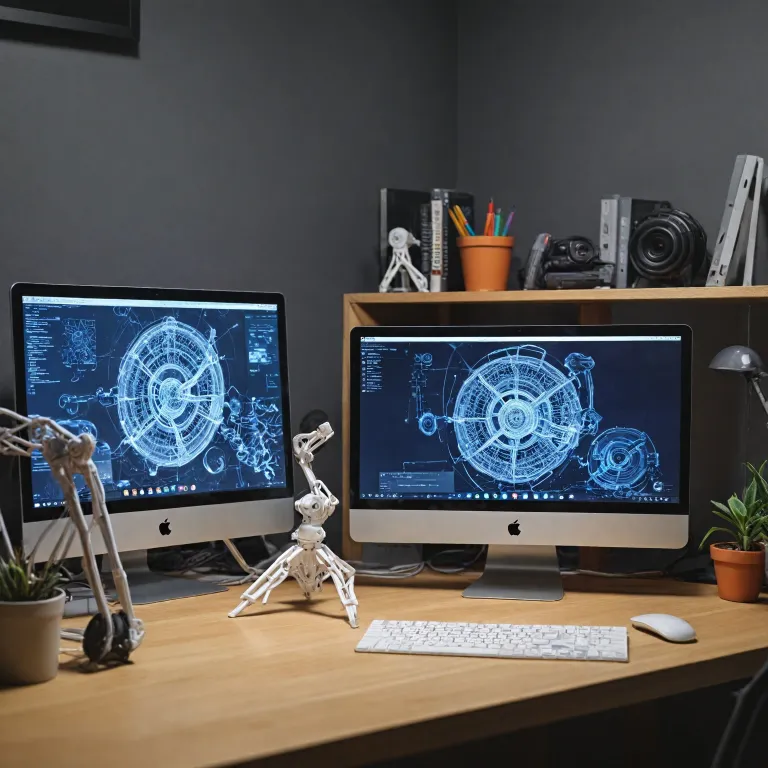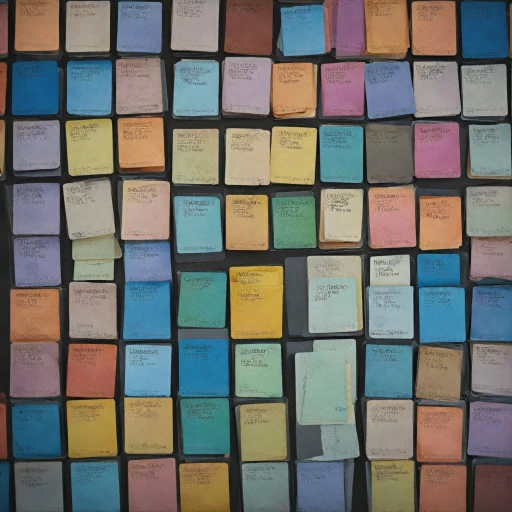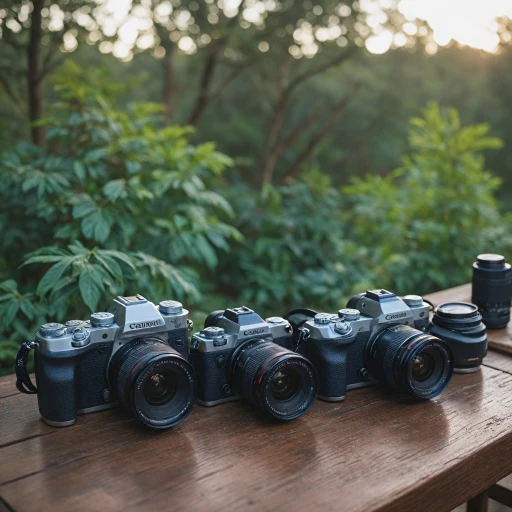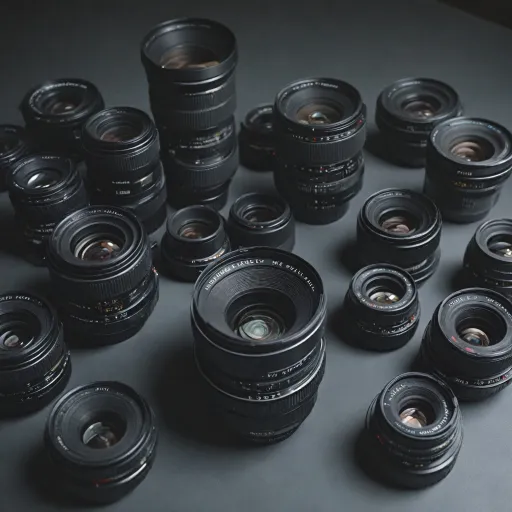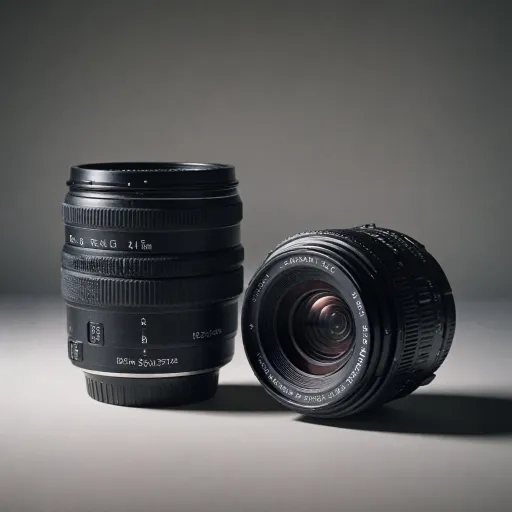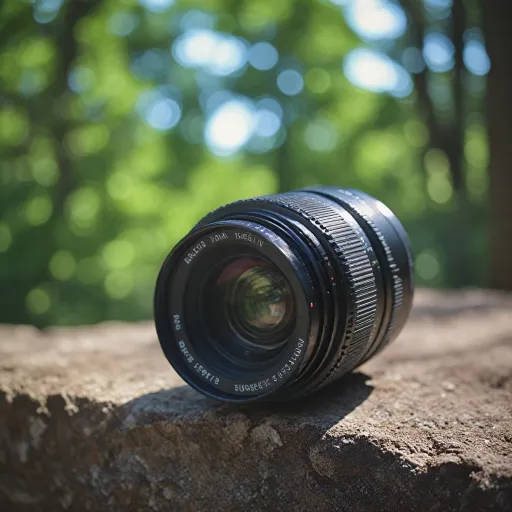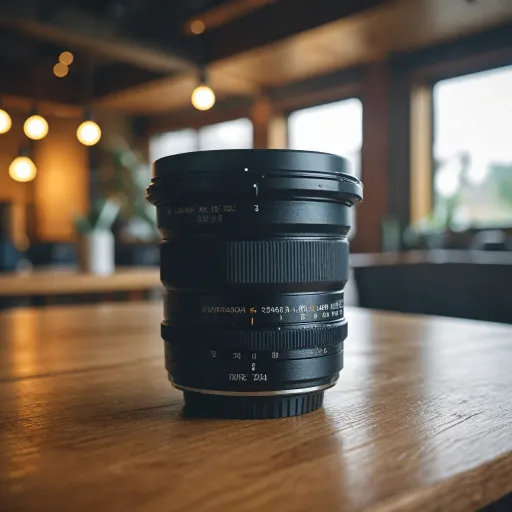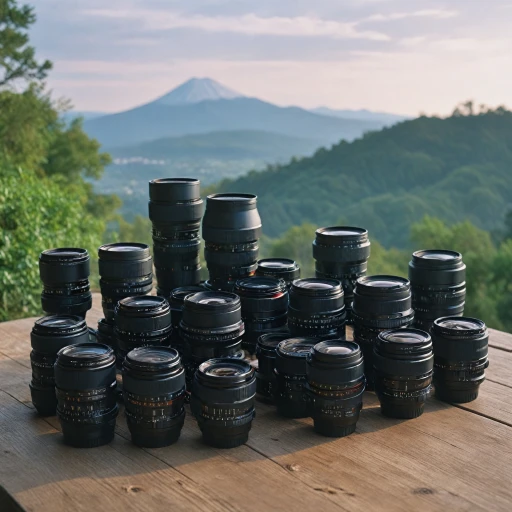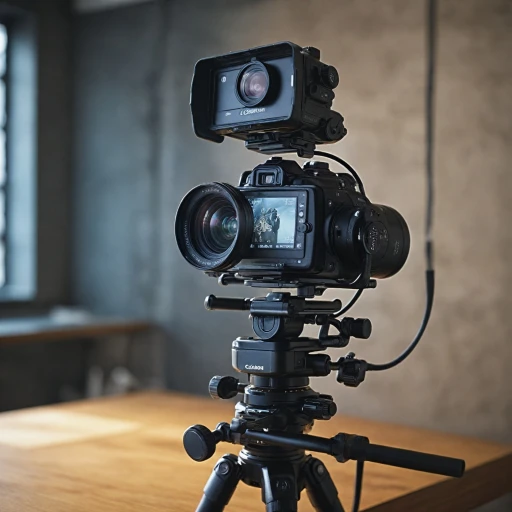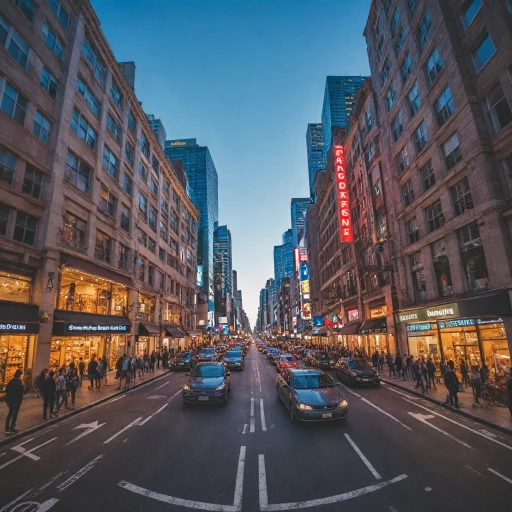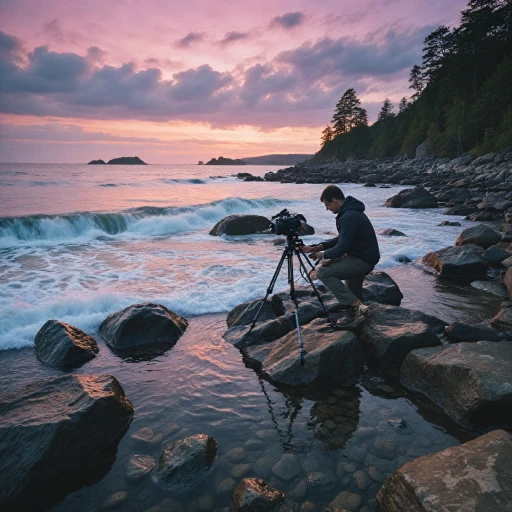
Understanding STL Files for Webcam Tripods
The Basics of STL Files
In the modern era of photography, having a solid groundwork helps in understanding how things work. STL files, or Standard Tessellation Language files, are at the heart of 3D printing innovations, enabling creative and practical solutions for photographers. Enthusiasts often use these files to create custom mounts or adapters tailored to their digital cameras and webcams, especially when the commercial options fall short.Finding the Right Fit for Flexible Applications
Photographers and videographers appreciate universal options that cater to their diverse needs. STL files allow for the creation of custom webcam tripods, camera mounts, mini tripod stands, and more. If you're exploring customizations for your GoPro action cam or even a simple webcam setup, knowing how to manipulate STL files can offer the perfect fit and flexibility. Advances in 3D printing make it possible to create models at home, using affordable devices such as the Ender 3D printer or similar models – providing the convenience of producing bespoke equipment that suits individual preferences.Compatibility and Versatility
Exploring the versatility of Arca mounts in digital photography provides insights into compatibility issues, helping you understand how STL files can be adapted for different types of camera mounts and tripod setups. Whether you’re crafting a webcam mount or a camera holder, knowledge about material compatibility and universal design principles will go a long way in ensuring stability and usability.Innovations and Free STL Resources
For those new to this world, diving into the ocean of available STL files can be overwhelming yet rewarding. Many online communities and websites offer free STL files for various projects, including adjustable tripod mounts and adaptable printer support systems. Demo reviews and online forums can also help in discerning which models and designs have received favorable user feedback, thus aiding in making informed decisions when venturing into DIY tripod solutions.Benefits of Custom Webcam Tripods
Advantages of Tailor-Made Webcam Tripods
Custom webcam tripods offer a range of benefits that can significantly enhance your digital camera setup. Whether you're using a webcam, a GoPro action cam, or a mini tripod for your phone, having a tripod that fits your specific needs can make a world of difference.
- Perfect Fit: Custom tripod mounts and holders ensure a snug fit for your device, reducing the risk of slips and falls. This is especially important for expensive equipment like cameras and GoPros.
- Enhanced Stability: A well-designed tripod mount provides better support, minimizing vibrations and ensuring clearer, sharper images and videos.
- Versatility: With the right STL file, you can create a universal tripod adapter that works with multiple devices, from webcams to mini cameras. This flexibility is invaluable for content creators who use various equipment.
- Cost-Effective: Printing your own tripod models can be more affordable than purchasing commercial options, especially if you have access to a 3D printer.
- Personalization: Custom designs allow you to add personal touches, such as color and branding, making your setup uniquely yours.
For those interested in diving deeper into the technical aspects, understanding the importance of camera screws is crucial. This knowledge can help you make informed decisions when selecting or designing your tripod mounts.
How to Choose the Right STL File for Your Needs
Selecting the Ideal STL File for Your Custom Webcam Tripod
Choosing the right STL file for your 3D printing needs can be a pivotal decision, especially when it comes to creating a custom tripod for your camera or webcam setup. With countless free and paid STL models available online, it can be overwhelming to settle on the perfect design that meets all your needs in terms of functionality, compatibility, and aesthetics. Consider these key factors when selecting an STL file for your tripod:- Device Compatibility: Ensure that the STL file you choose can accommodate the specific devices you plan to use, whether it's a webcam, mini tripod, or a versatile camera and phone holder. Some files might offer universal adapter features, supporting a range of products, from cameras to GoPro action cams.
- Printing Capability: Check if your 3D printer, such as an Ender model, can handle the technical requirements of the STL file. Consider the materials needed and whether the level of detail and complexity is within your printer's capabilities.
- Read Reviews: Look for user reviews on trusted forums or websites to determine the reliability of the STL model. Positive feedback about ease of printing, durability, and stability of the tripod mount can be reassuring.
- Customizable Features: If you require specific features like adjustable mounts or swivel joints, ensure the STL file caters to these needs. Customizable models can provide more flexibility and enhance your digital camera setup.
- Support and Resources: Opt for files that come with support documentation or community assistance. This can be a valuable resource during the printing process if you encounter any challenges.
3D Printing Your Webcam Tripod: A Step-by-Step Guide
Step-By-Step Printing Guide
Embarking on the journey to create your custom webcam tripod starts with understanding the essentials of 3D printing. Follow this detailed guide to transform your STL file into a functional tripod mount.- Preparation and Setup
- Start by ensuring your 3D printer is well-calibrated and ready for use. Having a reliable printer like the Ender is often recommended by digital camera enthusiasts for its precision in handling model creations.
- Gather your materials. PLA is commonly used due to its ease of use, but you may explore other materials based on specific needs such as durability for GoPro action camera models.
- Selecting the Right Filament
- Consider the weight and the primary use of the webcam tripod. For heavier cameras, a sturdier filament might be essential to provide the necessary support.
- Ensure your filament's diameter matches your printer's specifications to avoid jams or printing errors.
- Downloading and Preparing the STL File
- Download your chosen STL file. Ensure it is the best-fit for your camera mount needs - be it a mini tripod for phone holders or more robust versions for universal camera mounts.
- Import the file into your chosen slicer software. This will convert your STL files into gcode that your printer will understand.
- Printing Process
- Follow your slicer's recommendations for temperature and speed settings based on your filament choice.
- Start the printing process. Depending on the complexity of your mount STL files, this can take from a few hours to a full day.
- Monitor the printing process to ensure there are no mechanical failures or issues with adhesion.
- Post-Processing and Assembly
- Once printed, allow your models to cool down before removing them from the printer bed.
- You may need to sand or finish edges to ensure smooth connectivity if your webcam mount or camera holder requires assembly.
- Test the fit with your camera and make any necessary adjustments. You may wish to add a mini tripod adapter for extra flexibility.
Enhancing Your Digital Camera Setup with Custom Tripods
Maximizing Stability and Functionality
Incorporating custom webcam tripods into your digital camera setup offers significant advantages by enhancing both stability and functionality. A stable mount reduces unwanted motion, ensuring clear and sharp images or videos, especially during live streaming or video conferences. With the flexibility of 3D printing, you can design and create a tripod that perfectly integrates with your specific camera model or use case, whether it's a webcam, mini cam, or even a GoPro action camera. Custom 3D printed tripods can be tailored to fit various devices by utilizing universal adapter designs. This adaptability allows you to switch easily between different cameras or devices without the need for multiple tripods. The versatility of the designs found in STL files makes it possible to create multifunctional holders, supporting not only cameras but also mounts for additional equipment such as lighting or microphones.Evaluating Tripod Models and Materials
Exploring different 3D models and materials is a crucial step when enhancing your camera setup. The online community offers a vast array of free tripod STL files, each designed with specific functionalities in mind. Evaluating user reviews and feedback can provide insights into the durability and performance of these models before committing to printing your own. Moreover, the material chosen for printing plays a crucial role in the tripod's effectiveness. PLA and ABS are popular options due to their strength and ease of printing. These materials ensure that your tripod mount or camera holder is robust enough to support your device without compromising on portability.Integration With Existing Equipment
With the growing functionality of 3D printed tripods, integrating these custom solutions with your current digital camera equipment becomes seamless. For instance, if you own a universal tripod mount, you can simply adapt your custom printed solutions to act as a comprehensive support system. Many designs allow for easy attachment and detachment, giving you the flexibility to transition your setup between a mini tripod for tabletop photography and a larger, more stable rig for intricate shooting angles. Furthermore, designs such as the webcam tripod or camera holder can have features like adjustable angles and extended reach. This makes them suitable for both home office setups and professional filming environments. Leveraging the adaptability of these custom solutions helps create an efficient setup tailored to your specific requirements, enhancing your overall filming or streaming experience.Future Trends in 3D Printing for Digital Camera Accessories
Emerging Innovations in 3D Printing for Camera Accessories
The world of 3D printing is rapidly evolving, and its impact on digital camera accessories is no exception. As technology advances, we are witnessing a surge in innovative designs and materials that promise to revolutionize how we use and interact with our camera gear.
One of the most exciting trends is the development of more sophisticated tripod mounts and camera holders that offer enhanced stability and flexibility. With the increasing availability of universal adapters and mini tripod options, photographers can now customize their setups to suit a variety of shooting scenarios, whether they're using a webcam, GoPro action cam, or a traditional digital camera.
Moreover, the introduction of new materials in 3D printing is allowing for more durable and lightweight models. These materials not only improve the longevity of the tripod and mount but also enhance their portability, making them ideal for photographers on the go.
Expanding Accessibility and Customization
Another significant trend is the growing accessibility of STL files for webcam tripods and other camera accessories. With a plethora of free and paid designs available online, photographers can easily find and print a model that meets their specific needs. This democratization of design means that even those with limited resources can access high-quality, customized camera gear.
As 3D printers become more affordable and user-friendly, more enthusiasts are diving into the world of DIY camera accessories. This shift not only fosters creativity but also encourages a community-driven approach to product development, where users can share reviews and improvements on existing designs.
The Role of Technology in Shaping the Future
Looking ahead, the integration of smart technology into 3D-printed camera accessories is a promising area of development. Imagine a camera mount that can automatically adjust its position based on the subject's movement or a webcam mount that optimizes lighting conditions for video calls. These innovations could significantly enhance the functionality and convenience of our camera setups.
In conclusion, the future of 3D printing in digital camera accessories is bright and full of potential. As we continue to explore new possibilities, it's clear that these advancements will play a crucial role in shaping the way we capture and share our world.
